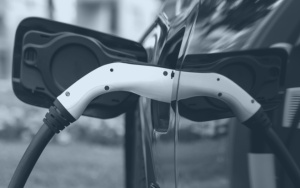The New Normal | The Future of the Industry

The auto industry has experienced significant changes since 2020, with shortages, lower inventory, and high prices all impacting the market. Despite the decline in sales, the sector has seen spiked profits. Today we’ll explore the reasons behind these changes and the possibilities for the future of the industry.
The impact of shortages and lower inventory
In 2022, the auto industry faced its worst year in over a decade due to supply chain issues and a shortage of crucial semiconductor chips. Coupled with high-interest rates and low inventory, these factors resulted in a significant drop in car sales. Only 13.7 million vehicles were sold in 2022, an 8% decrease from the previous year and the lowest total since 2011. Major automakers such as Stellantis, Honda, Nissan, and Toyota all experienced declines in sales. Despite the alarming sales figures, the auto industry witnessed sky-high profits during this period.
High prices and increased profit margins
Pandemic-era pent-up consumer demand remained strong despite the supply challenges and automakers were able to capitalize by increasing their prices and profit margins. Cars and trucks were sold almost immediately upon reaching dealership lots, leading to a surge in average vehicle prices. According to J.D. Power, the average price paid for a vehicle in December 2022 reached a near-record high of $46,382. Data from the Labor Department’s Consumer Price Index also revealed that American consumers were paying approximately 20% more for cars compared to 2019. These price increases contributed to the profitability of domestic manufacturers and car dealerships.
Outlook for the future
The auto industry has entered a new era characterized by limited choices, higher prices, and larger profit margins. Despite the challenges faced in 2022, analysts predict a strong year for the industry in 2023. Earnings per share for auto companies listed in the S&P 500 are forecasted to grow by 55% throughout the year. However, some concerns linger. Consumers are becoming cautious due to the current economic environment, particularly regarding high prices. Rising interest rates, inflation, and potential recessionary factors could also limit the demand for vehicles. Financing a vehicle is also becoming more expensive, with auto loan rates reaching their highest level since 2010. Supply chain problems and recessionary fears continue to pose challenges for the global automotive industry. Wall Street analysts expressed growing concerns that supply shortages could lead to a “demand destruction” scenario just as auto production is recovering.
Auto sales have significantly changed since 2020, driven by shortages, lower inventory, and high prices. Although sales declined, the auto industry experienced spiked profits due to increased pricing and strong consumer demand. The outlook for 2023 shows promise, with anticipated growth in new-car sales. However, concerns regarding high prices, interest rates, and supply chain challenges persist, emphasizing the need for cautious optimism in the auto market.
What are your predictions for the auto industry? Leave a comment below!
At PartsEdge, we’re committed to bringing you the latest insights and solutions for automotive businesses. We’ve created an extensive library of free e-books, DMS education, parts inventory education, and more editions of this series exploring industry trends and helping you prepare for the future of the industry.
Thoughts, questions, or opinions? Get in touch!






